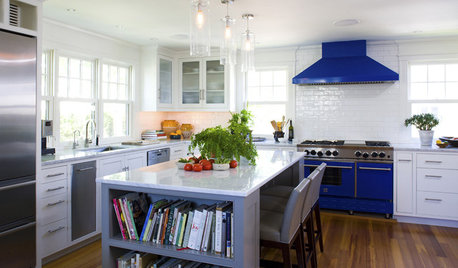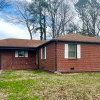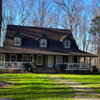Released this morning...
"S&P/Case-Shiller U.S. Home-Price Index Fell 12.7% (Update2)
By Shobhana Chandra
April 29 (Bloomberg) -- Home prices in 20 U.S. metropolitan areas fell in February by the most on record, pointing to an imbalance between supply and demand that shows no sign of ending.
The S&P/Case-Shiller home-price index dropped 12.7 percent from a year earlier, more than forecast and the most since the figures were first published in 2001. The gauge has fallen every month since January 2007.
Prices will probably keep sliding as foreclosures push even more properties onto the market just as stricter lending rules limit the number of qualified buyers. Shrinking home values have contributed to a slowdown in consumer spending that may already have tipped the economy into a recession.
``This is just one more strain for consumers, in addition to high energy prices and tight credit,'' said Michelle Meyer, an economist at Lehman Brothers Holdings Inc. in New York, which forecast a price decline of 12.4 percent. ``Prices are going to continue to fall, probably through the end of next year.''
Prices dropped 2.6 percent in February from a month earlier, after a 2.4 percent decline in January, the report showed. The figures aren't adjusted for seasonal effects, so economists prefer to focus on year-over-year changes instead of month-to-month.
The index was forecast to drop 12 percent following a 10.7 percent drop in January, according to the median estimate of 14 economists surveyed by Bloomberg News. Estimates ranged from declines of 12.6 percent to 11 percent.
The group's 10-city composite index, with a history back to 1987, fell 13.6 percent in the 12 months ended in February, also the most ever.
Las Vegas, Miami
Nineteen of the 20 cities in the index showed a year-over- year decrease in prices for February, led by a 23 percent slump in Las Vegas and a 22 percent decline in Miami. Charlotte was the only area showing a gain with a 1.5 percent increase.
Compared with January, homes in all 20 areas covered dropped in value.
``We're going to continue in this abyss for a while,'' said Ellen Zentner, an economist at Bank of Tokyo-Mitsubishi UFJ Ltd. in New York. ``Inventories are getting worked off but it's a slow process. Sales and prices will go down.''
Prices remained under pressure in March, reports last week showed. The median price of existing homes sold last month fell 7.7 percent from March 2007, the National Association of Realtors said. The median value of new houses fell 13.3 percent, the most since July 1970, according to the Commerce Department.
The declines have yet to stir buyers. The total number of houses sold in March dropped to a 5.456 million annual pace, the fewest since comparable records began in 1999.
Reduce Foreclosures
Lenders are trying to devise ways to reduce foreclosures. Bank of America Corp., seeking approval of its Countrywide Financial Corp. takeover, yesterday said it will modify at least $40 billion in troubled mortgage loans over the next two years to keep customers in their homes. The move would help as many as 265,000 homeowners, company officials said.
GMAC LLC, the auto and home lender that General Motors Corp. sold to a private equity group, reported today it lost $589 million in the first quarter as more borrowers fell behind on mortgage payments.
Robert Shiller, chief economist at MacroMarkets LLC and a professor at Yale University, and Karl Case, an economics professor at Wellesley College, created the home-price index based on research from the 1980s.
Other Measures
The S&P/Case-Shiller index and another by the Office of Federal Housing Enterprise Oversight track the same home over time and more accurately reflect price trends, economists said.
The gauges from the Commerce Department and the Realtors group can be influenced by changes in the types of homes sold. Higher sales of cheaper homes relative to more-expensive properties will bias the figures down.
Eli Broad, a philanthropist and co-founder of KB Home, the fifth-largest U.S. homebuilder by revenue, yesterday said he expects home prices to drop another 20 percent.
``I don't think we're anywhere near a bottom in housing,'' Broad told Bloomberg TV yesterday at the Milken Institute Conference in Beverly Hills, California. ``We're going to have a big inventory of unsold, unoccupied homes that's going to take three or four years to clear out.''
Earnings at homebuilders are suffering as demand falters. Ryland Group Inc., the U.S. builder that targets first-time buyers in 15 states, last week reported a first-quarter loss as sales dropped.
``Business conditions have not improved,'' Chief Executive Officer Chad Dreier said in an April 24 conference call with analysts. Closings in the quarter dropped by almost a third from the same time last year and the average price fell by 14 percent, the company said.
To contact the reporter on this story: Shobhana Chandra in Washington at schandra1@bloomberg.net
Last Updated: April 29, 2008 09:15 EDT"
As some of you know, DH sits on one of the agencies' Advisory Boards. They recently had a "Pow-wow" to discuss market conditions. Since it's public-info now it's OK for me to speak a bit.
Folks, if you must sell in this market...it's all about price. Sure, clean the place up, declutter, & the usual stuff but we are so far past the "hire a stager" thing it's not funny. Get out in front...CMAs are almost worthless (sorry, don't mean to offend my REALTOR friends here...it's not their fault).
The trend lines are all going in the wrong directions. Delinquencies over 60-days are trending sharply upward & prices are doing the opposite. Loans put on in '06 are performing horribly.
Lenders are so overwhelmed they are looking the other way when a loan defaults. Foreclosure time has more than doubled from '07. This is distorting the numbers (delinquencies & foreclosures are really higher than reported) and delaying the spiral. Eventually, these house will hit an already glutted market. It's hard to get a sense of the magnitude of the problem because of these delays. Sales of foreclosed homes rose 4.4 percent last year at the same time the supply of such homes more than doubled.
In February, 5 million existing homes were sold on a seasonally adjusted, annualized rate, down 31% from the peak of 7.25 million in September 2005 (National Association of Realtors). More than 4 million existing homes were on the market in February. That's 53% more than the 2.6 million average of the past nine years (again stats are from the NAR).
The civil court in St. Lucie County, Florida, is getting about 44 foreclosure cases to file every day. That's the same number it averaged in a typical month in 2005. The Court is overwhelmed. Filings are sitting in boxes for three weeks before a clerk even looks at them. Then, it's taking another two months before a Court date can be set.
Foreclosures are also being delayed because loss mitigation (work outs) teams are trying to salvage some of the defaulted loans. Nobody knows how many can be saved but servicers are at least trying. But, again, it clogging up the wheels & distorting the published numbers.
The worst is still concentrated in CA, FL, NV, CO, MI, Wash. DC area, & MA. Engergy states like Wyoming or Texas are holding their own. The mid-west is...well, it's the mid-west & outside of MI there's still 'some' market but also a glut of resales & new home inventory. The PNW has stalled & inventory's rising.
For some perspective...1 in 194 American households received a foreclosure notice in Q1 '08.
/tricia


















jasper_60103
galore2112
Related Discussions
This seed-starting thing ain't all it's cracked up to be
Q
Do U wait til the threat of frost is over before planting shrubs?
Q
The Gators ain't big as they use to be
Q
Kids and the media - carried over from another post
Q
chisue
kurtg
triciaeOriginal Author
monzamess
jasper_60103
triciaeOriginal Author